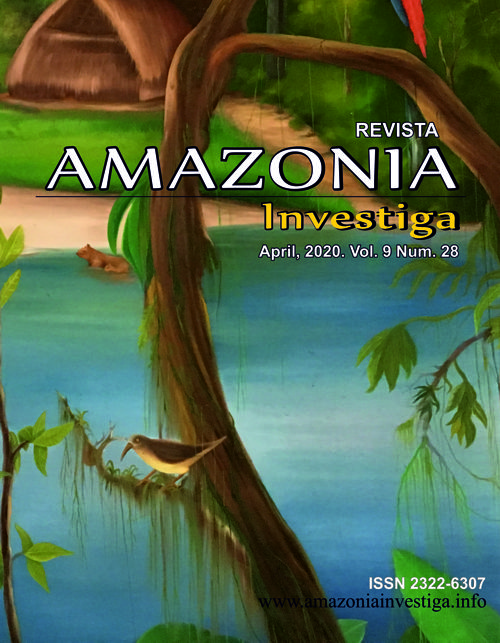Interrogation of the victims during the investigation of crimes committed by youth extremist groups
Publicado 2020-04-21
Palabras clave
- interrogation, victim, investigation, crime, youth, informal group, informal association, extremism.
Cómo citar
Resumen
For several years in Ukraine and in other countries, the activity of informal criminal groups, in particular, of the youth groups, can be observed.
Thus, there is a need for theoretical understanding of the activities of the respective criminal groups in order to make proposals for improving the current criminal procedural legislation.
The article emphasizes the importance of evidential information that can be obtained during the interrogation of victims of crimes committed by youth informal groups of extremist orientation. In this connection, the authors have considered: 1) the features of the victims to be taken into account when investigating the criminal activity of informal youth extremist groups; 2) sources of information on the identification of victims of crimes committed by members of youth informal groups of extremist orientation; 3) separate questions of questioning of the specified category of victims. The scientific literature devoted to informal youth groups, fight against extremism, investigation of group crimes, etc. was analyzed during the scientific research. In addition, such scientific methods as observation, analysis, synthesis, comparison, generalization, extrapolation were used. The empirical basis for the study was the investigation of crimes committed by members of youth informal groups (in particular, with extremist orientation). A promising area of scientific and applied research of the stated problem is the development of methodological recommendations on the conduct of communicative investigative (search) actions, in particular, the questioning of such a procedural figure as the victim.
Descargas
Citas
Bashkatov, I.P. (2002). Psychology of asocial-criminal groups of adolescents and youth. Moscow: Publisher of NGO "MODEK".
Levikova, S.I. (2002). The phenomenon of the youth subculture (socio-philosophical aspect). Moscow.
Khaletska, L.L. (2008). Youth subcultures or informals: looking at the problem. Poltava: POIPPO.
Bliznyuk, I.V. (2010) The Contemporary Youth Movement in Ukraine (1980s - 2008). Pereyaslav-Khmelnitsky.
Lisovets, O.V. (2011). Theory and methodology of working with children's and youth organizations of Ukraine. Kyiv: Academy.
Kukhar, V. (2011). Youth informal movements in Ukraine (end of XX – beginning of XXI century). Problems of education, 14 (2-3), pp. 173-179.
Andryushchenko, E.S. (2015). Ukrainian right-wing organizations in the context of socio-political processes (late 1980s – 2015). Zaporizhzhia,
Vasylchuk, Ye.O. (2016). Youth Political Radicalism and Extremism in Modern Ukraine. Kyiv.
Pavelkov, V.R. (2016). Aggression as a phenomenon of the present in the systems of youth subcultures. Problems of modern psychology, 31, pp. 293-303.
Kolomoets, T., Liutikov, P., & Larkin, M. (2017). Informal youth associations as a business reality. Baltic Journal of Economic Studies, 3(5), pp. 294-297.
Boiarov, V., Larkin, M., Legkykh, K., Melkovskyi, O., & Khromova, M. (2019). Ways to Prevent the Financing Youth Informal Groups of the Extremist. Amazonia Investiga, 8 (24), pp. 479-483.
Schafer, J.R., & Navarro, J. (2003). The Seven-Stage Hate Model. The Psychopathology of Hate Groups. FBI Law Enforcement Bulletin, 72 (3), pp. 1-9.
King, J. (2009). Skinheads. Vintage.
Racist Skinheads: Understanding the Threat. (2012). The Southern Poverty Law Center. Retrieves from: https://www.splcenter.org/20120625/racist-skinheads-understanding-threat.
Roszak, T. (1969). The Making of a Counter Culture. Reflections on the Technocratic Society and Its Youthful Opposition. New York.
Larkin, M.O., & Sabadash, V.P. (2012). Features of the investigation of crimes against a person committed on the basis of racial, national or religious enmity. Zaporizhzhya: Zaporizhzhya National University.
Prisyajnyuk, T.I. (2007). Crime victim: Legal protection issues. Kyiv: Curriculum Center.
Gross, G. (2002). A guide for judicial investigators as a system of forensic science. Moscow: LexEest.
Kazmirenko, L.I. (Ed.). (2009). Psychology of investigative activity. Kyiv: Legal Unity.
Chaplinsky, K.O. (2010). Tactical Support for Investigation of Criminal Group. Dnipropetrovsk: Dnipropetrovsk State University of Internal Affairs; Lira LTD.











